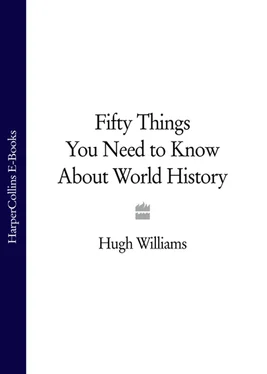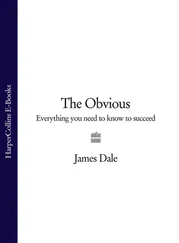Jan Hus was born in southern Bohemia. In 1398 he became a professor at the University of Prague where he was ordained and began to teach theology. His lectures and sermons in favour of clerical reform gathered widespread support, partly because many members of his audience were looking for release from the domination of Vienna and the German sovereignty of the Holy Roman Empire. Earlier in the fourteenth century, other Bohemian priests had begun to call for change. The Czech language and the individuality of the Czech people came together to form a nationalist movement that found expression in the language of its priests. Hus was influenced by the English cleric, John Wyclif, who had begun to identify a new approach to organised religion. Both men went back to the Scriptures, arguing that the Church should not own property or pursue wealth. The observation of religion should be founded on the teachings of its Christian founders, nothing else. The Church was a body of elected members predestined to enjoy salvation: Christ, not the Pope, was their leader. Hus’s views alarmed the Church authorities. In 1411 he was excommunicated and a year later forced to go into hiding where he wrote his most famous work, De Ecclesia. ‘The opinion of no man,’ he said, ‘whatever his authority may be – and consequently the opinion of no pope – is to be held if it plainly contains falsehood or error.’
Hus’s death stands as a uniquely important event in the whole history of man’s desire to be free.
In 1414 the Holy Roman Emperor, Sigismund, called a council in the German city of Constance overlooking the Bodensee. His main concern was to heal the schism that had divided the Church since Gregory XI had returned to Rome from Avignon. Aware that the views of John Hus had found favour with many of his subjects in Bohemia, he invited Hus to attend the gathering in order to explain his views. He promised him safe passage and Hus, against the advice of some of his closest supporters, decided to accept. Instead of participating in the theological debate he had expected he was arrested and tried for heresy. His accusers urged him to recant but Hus refused, arguing that the charges against him were inaccurate. ‘I stand at the judgement seat of Christ, to whom I have appealed,’ he told them, ‘knowing that He will judge every man, not according to false or erroneous witness, but according to the truth and each one’s deserts.’ In July 1415 he was removed from the priesthood and burned at the stake. He died singing hymns.
Hus, caught up in the political turmoil of the schism that had divided the papacy at the end of the fourteenth century, found that those who had supported him deserted him in his hour of greatest need. In England, John Wyclif was luckier. His strongest supporter was John of Gaunt, the most powerful prince in the land who, although not always agreeing with some of Wyclif’s views, allowed him to die in peace in 1384 in the Leicestershire village of Lutterworth to which he had retired. It was not until after his death, at the Council of Constance more than thirty years later, that Wyclif’s works were condemned as heretical.
While Wyclif was allowed to die quietly, his greatest apostle, Jan Hus, was burned. However the flames of change that Hus had set alight began a movement that was to change the Roman Catholic Church forever. In Bohemia his death was met with anger and rebellion. Between 1420 and 1436, the forces of the Hussites repelled the armies of the Pope and the Holy Roman Emperor that were sent to subdue them. Inspired by Jan’s teachings and united by a sense of Czech nationhood, the Hussites fought successfully against the crusades launched against them by an enraged Catholic Church. The lessons that Jan Hus had taught his people did not die. He – and Wyclif too – were the forerunners of the Reformation that in the century that followed would finally destroy the universal power of the papacy and set Europe and the world on a new course.
Hus’s decision to die for his beliefs towers over the time in which it took place, a permanent reminder of man’s desire for liberty.
The death of Jan Hus stands as a uniquely important event not only in Czech history but in the whole history of man’s desire to be free. The Czech people have been some of the most oppressed in the history of Europe. Suppressed by the Habsburg monarchy of Austria-Hungary in what one writer called a ‘truceless warfare against the soul of a people’, they enjoyed a brief moment of independence under Thomas Masaryk after the First World War. This was crushed first by the Nazis and then by Stalinist Russia. In the fight for Czech freedom three men called Jan played important parts. Two of them were students who lived in the twentieth century. The first, Jan Opletal, was killed in Prague during demonstrations against the Nazi occupation of the country in 1939. The second, Jan Palach, burned himself to death thirty years later in 1969 after Russian troops destroyed the liberalising reforms of the Czech government. He died within walking distance of Prague’s memorial to the third Jan – Jan Hus. In the Middle Ages, life and liberty revolved entirely around religion. By expressing a new approach to religious observation Jan Hus defined liberty for the time in which he lived. But his decision to die for his beliefs towers over the time in which it took place, and succeeding ages, unchanged by any historical context, a permanent reminder of man’s desire for liberty.
CHAPTER 3
The American Declaration of Independence 1776
In 1776 the thirteen colonies on the continent of North America declared their independence from British rule. The reasons they gave, and the nation they created as a result, define many of the ideas of liberty in the modern world.
‘Democracy starts here.’ So proclaims the promotional material for America’s National Archives in Washington DC. The Archives, it says, tell the story of the ‘American journey to young and old, scholars and students, cynics and dreamers.’ They are held in a grand neo-classical building on Pennsylvania Avenue, designed in 1935 by the same architect who created the city’s Jefferson Memorial. Among their treasures is a 1297 copy of England’s Magna Carta, as well as the ‘Emancipation Proclamation’ issued by Abraham Lincoln in 1863, freeing all slaves held in Confederate States. But pride of place goes to the so-called ‘Charters of Freedom’ kept in a splendid, echoing rotunda at the heart of the building. These are the American Constitution, the Bill of Rights and the Declaration of Independence. The Declaration is a faded document barely readable to the naked eye. To discover what it says, and who signed it, one needs to look at the facsimile displayed alongside it. But people do not come to read it: they simply come to look. This piece of dilapidated parchment, just over two feet wide and nearly two and a half feet long, is one of history’s most important symbols of liberty.
The leaders of the thirteen colonies on the eastern seaboard of the American continent became the first people to give expression to modern ideas of democracy through the mismanagement and miscalculation of their imperial masters in Britain. During the last quarter of the eighteenth century, Britain enjoyed a system of government more open and more liberal than most other places in the world. Europe’s other great world power, France, was in the sclerotic grip of the Bourbon monarchy and the ancien régime. Louis XV, who ruled for fifty-nine years, only thirteen less than his great-grandfather, Louis XIV, before him, died in 1774 having abandoned all attempts to reform his country’s creaking administration. China was locked behind its wall of self-imposed isolation. In St Petersburg and Vienna, two powerful autocrats, Catherine the Great and Joseph II, attempted to modernise their vast lands, but never with a view to relinquishing any of their own enormous power. Catherine was the more impressive of the two. She was actually a minor German princess who deposed (and perhaps murdered) her weak-willed husband and seized the throne. In partnership with powerful Russian ministers, generally her lovers as well, she managed to get the wild country she governed to adopt some European ideas, but widespread reform eluded her. Her fellow emperor, Joseph of Austria, dismissed her as merely ‘a woman who cares only for herself, and no more for Russia than I do’.
Читать дальше












